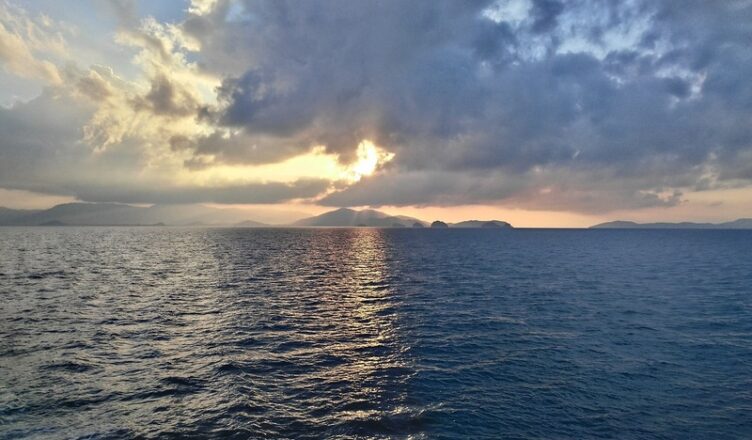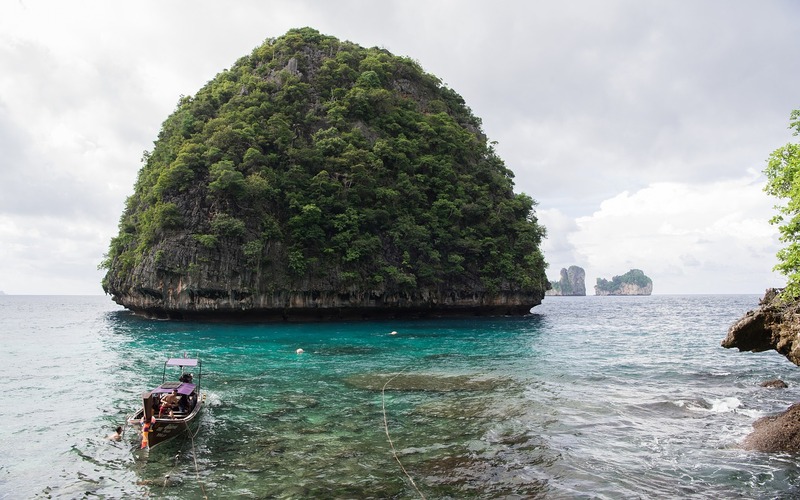The month of August gives a hot and humid weather to most parts of Thailand. You can expect to see a lot of rainfall during afternoons for northern regions. However, weather will be drier for Southwest coast during this month. As a result, most Europeans prefer to visit here. It increases the cost you have to bear when exploring Thailand during August. Let’s learn more on how it would be like to visit Thailand during August.
The Weather in Thailand in August
Across Thailand, August is a hot, humid, and rainy month. The average temperature remains constant from July, around 27-32°C (80-90°F), with Bangkok and other central areas seeing highs of 33°C (91°F). Humidity stays oppressively high, above 75% on average, which can make the heat feel even warmer. The rains continue nationwide, though they begin tapering off in the south. The showers typically come in heavy afternoon downpours rather than continuous storms.
The weather varies somewhat by region in August. The north sees its wettest month, particularly the Chiang Mai area, as the southwest monsoon focuses its moisture here. Daily rain and storms are likely. Meanwhile, the Andaman Coast has its second-driest month as the southwest monsoon shifts away. Phuket gets only occasional storms and Koh Samui stays mostly dry. Ko Chang and the east coast see continued rains and rough seas from the ongoing southwest monsoon. The Gulf Coast around Ko Samui stays sheltered.
Regional Weather in Thailand
Here’s what to expect from the weather in different regions of Thailand in August:
- Bangkok and Central Thailand: Very hot with high humidity. Afternoon thunderstorms and downpours are frequent, and skies stay cloudy, but rain tapers off from July.
- Northern Thailand: The peak of the rainy season. Chiang Mai and Chiang Rai see frequent rain with storms and flooding possible. Roughly 60-190 mm (2.5-7.5”) of rain falls over 15-16 days on average.
- Northeastern Thailand: Hot and humid with moderate rain, around 160-220 mm (6-8.5”) over 14-16 rainy days in Nakhon Ratchasima and Udom Thani.
- Eastern Seaboard: Continued rainy season weather. Rough seas from the southwest monsoon with possible heavy rain and storms inland around 200 mm (8”) in Pattaya.
- Southern Gulf Coast: Ko Samui stays relatively dry while the mainland around Surat Thani sees increased rain, around 190 mm (7.5”) over 14 days in August. Humid and hot.
- Andaman Coast: Koh Chang and Ranong are still quite rainy from the monsoon, but Phuket and Krabi shift into their driest period with just occasional quick storms. Skies start to clear later in August.
Best Places to Visit in August
With the rainy season in full swing, August requires some careful destination planning in Thailand. Here are some of the best places to visit:
- Phuket and the Southern Islands: Phuket experiences its second driest month in August, making it a good choice if you’re set on the beaches. On average, 130 mm (5”) of rain falls over just 11 rainy days. The skies clear towards the end of the month. Koh Samui, Koh Tao, and Koh Phi Phi also stay relatively dry.
- Bangkok: The capital sees fewer rainy days versus June and July. Bangkok offers plenty of indoor activities, including Museums, Shopping Malls, Art Galleries, Cooking Classes, Cabaret Shows, and Art Museums. The afternoon rains provide cooling relief from the heat and humidity as well.
- Chiang Mai: Expect frequent rain in the north’s main city, but attractions like temple visits and cooking classes can work around the showers. The lush countryside is beautiful and jungle treks continue.
- Ko Chang: Thailand’s second largest island after Phuket continues to see heavy rainfall on its mix of beaches and jungles. But it offers discounted hotel rates in August. Activities focus on waterfalls, hiking, and relaxation.
Crowds and Costs in August
August is considered high season in Thailand, with European vacationers joining Asian visitors. Hotel rates and crowds remain elevated, particularly at the popular beach resorts. Mid-August sees Thais travel for Mother’s Day. The weather keeps some visitors away, though, so you can often negotiate discounted hotel rates at beach areas. Overall costs remain raised across dining, activities, and transport.
Here are some tips for crowds and costs:
- Head to lesser-visited spots like Koh Kood for a quieter beach vacation over crowded Phuket. Or enjoy the cultural sites in Chiang Mai versus package-tour heavy Bangkok.
- Book accommodations well in advance for popular destinations and look for promotions since occupancy is lower.
- Expect impacted activities like guided tours and water sports to be more expensive. Shop around as prices can vary.
- Hire a private car or guide rather than joining crowded group excursions. The personalized experience is often worth the extra expense.
What to Wear in August
The hot, humid weather continues nationwide in August. With average highs of 32-34°C (90-93°F), light and loose-fitting clothing is essential. Breathable natural fabrics will keep you coolest. Pack your rain jacket and umbrella, as the afternoon downpours can be sudden and heavy. The cooler mountain areas allow adding a light sweater or jacket at night. Here are some clothing tips:
- Light dresses, skirts, shorts, tanks, and short sleeve shirts and blouses will be most comfortable. Slip-on sandals or flip-flops work best.
- Synthetic fabrics like polyester get clammy. Cotton and linen are good choices, or performance fabrics that wick moisture like Dri-FIT.
- Bring a poncho or light raincoat for sightseeing. Consider water-resistant shoes or sandals.
- In the mountains around Chiang Mai, add long pants and a light sweater or hoodie for cooler mornings and nights.
- Dress conservatively when visiting temples. Cover shoulders and knees.
- Don’t forget sunglasses and hats for sun protection, plus swimwear if you’ll hit the beach.
Thailand continues its wettest weather across the north in August, while the south and islands start to dry out. Flexibility for dealing with rain showers will be essential, but you can still find pleasant beaches, cultural sites, and outdoor adventures if you choose the right regions. With the high season ongoing, costs remain elevated, but hotel deals can provide some value as occupancy declines.













